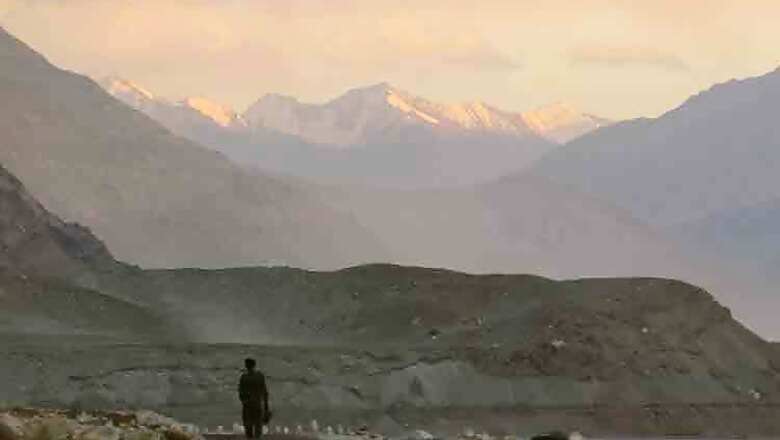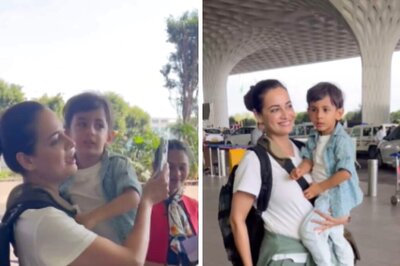
views
Jammu: Soon after the governor of Jammu and Kashmir, Satya Pal Malik, approved Ladakh as a separate division, a new political storm has started brewing in the state with some people looking it as a discriminatory decision “purely for electoral gains”.
While some see it as a larger plan to make Ladakh a “union territory”, others are looking at it as a division of the state on “communal” lines.
Though all the political parties in the valley welcomed the decision, many of them sought a similar status for Chenab Valley and Pir Panjal areas of the state.
However, there is also a division among the people of Ladakh.
With about 87,000sqkm area, Ladakh has two districts—Kargil and Leh — and is one of the most sparsely populated areas in the state.
This “cold-desert” has a population of about 284,000 people according to the 2011 survey — 39% Buddhists, 46% Muslims and 12% Hindus.
Kargil is 204km northeast of Jammu and Kashmir’s summer capital, Srinagar, and has a predominantly Muslim population. About 230 km east is the Leh, the largest town in the area where most people practice Buddhism.
The initial rift is between Kargil and Leh as the latter has been designated as the headquarters of the newly created division. Politicians from Kargil district on Saturday threatened a mass agitation if the administration did not review its decision of setting up all the offices in Leh.
Leh town will now have offices of the divisional commissioner and inspector general of police with a full administrative and revenue division on a par with Kashmir and Jammu divisions.
People of Kargil are demanding that these offices function on a rotational basis — from Kargil during summers and from Leh during winters.
“We are not against the divisional status to Ladakh region, comprising both Leh and Kargil districts. We are against posting the divisional commissioner's headquarters along with the IGP office permanently at Leh,” said Feroz Khan, a senior National Conference leader, during a press conference.
Siddiq Wahid, former vice-chancellor of the Islamic University of Science and Technology and a resident of Leh, finds it to be an attempt to divide Ladakh.
“A lot of Ladakhis are of opinion that this is an attempt to divide Ladakh in favour of Leh,” says Wahid.
“The motivation behind this decision seems to divide the region along communal lines because this is a return to 1979, the year when the district of Ladakh was divided into two districts. The reason for that division was administrative,” he says.
This time, Wahid feels the solution could be in creating two administrative centres.
Separatist-turned-mainstream politician Sajad Lone, who is also an ally of the BJP in the state, voiced similar views.
“The rotational demand for divisional headquarters between Leh and Kargil is justified. Kargil has been ignored in the developmental processes. The government runs the risk of wronging a right. Divisional status is a right step, while static headquarters is wrong,” he wrote on Twitter.
“There is a huge economic disparity between Leh and Kargil. It will push Kargil further down the ladder. Inclusiveness demands that devolution is evenly divided. It will develop both the places,” Lone added.
The decision is also being viewed as discrimination with Chenab Valley and Pir Panjal area of the state. The two regions have been demanding separate divisions for a long time.
Soon after the governor made the announcement, former Jammu and Kashmir chief minister Omar Abdullah said that if he came to power in the state, he would grant division status to both these regions.
At present, both the regions with a mixed Muslim and Hindu population, fall under the Jammu division.
While Pir Panjal, comprising Rajouri and Poonch disctricts, is in the south-west of Jammu, on the south-east are Doda, Ramban and Kishtwar districts forming the Chenab Valley.
People in Kashmir find it to be an attempt to reduce the size of Kashmir.
“They are trying to shrink Kashmir. As there are differences in Kashmir and Ladakh Valley, there are differences in Chenab and Pir Panjal areas with Jammu. They are trying to segregate Ladakh from Kashmir valley,” said academician Sheikh Showkat.
This could also be an election strategy, Showkat said, adding, “The BJP has got a jolt in the recent elections. Hence, it is a bit sceptical about the upcoming polls and is aware that every parliamentary seat is important.”
“There is also a perception among people that somewhere they are moving us towards the Musharraf formula — integrate some regions, where there is no problem, with India and Pakistan, and confine the dispute to areas with Kashmiri-speaking population. Then work on joint management and self-rule,” the academician said.
Questioning the authority of the governor, Showkat said, “It is a policy decision. Governor’s rule is a stopgap arrangement. Should the governor take this sort of a decision?”
“Even elected governments hesitate to take such decisions but the governor doesn’t seem to care”.
Politicians of Kashmir also saw it through the prism of creating a divide in the state.
“This decision, other than administrative, is a political strategy to divide the Muslim mandate. The division is being created on religious lines. They have been using the narrative of Sunni-Shia, north-south, separatists-mainstream, Pahari- Gujjar-Bakarwall, etc,” said PDP’s youth president Waheed Para.
This now seemed to have become a major agenda for political parties of the two regions in Jammu ahead of the elections.
“We are not against divisions, but we had demanded similar divisions for Peer Panjal and Chenab. This will certainly be our on our agenda,” Para said.
The Ladakh region already has an autonomous development council created in 2012.
“The Ladakh Autonomous Hill Development Council already has a lot of power. Those who actually deserve a separate division, taking in consideration geography and population, are being ignored,” Para added.
Para said this is further going to affect the state’s worsening peace and stability.
However, people of Chenab and Peer Panjal blamed the Kashmiri politicians.
“The politicians of Kashmir have been promising us that we will be granted the status of a separate division. But when they came into the power it never happened,” said Asif Iqbal Naik, a journalist based out of Chenab Valley.
“In the last election, Mufti Sayeed promised the same but he never did anything,” said Asif.
“The people in our region are backward and we are lagging behind in all aspects of development,” said Asif.
There are also voices in Ladakh who have been demanding that the region be made a union territory. However, Wahid said that was practically impossible.
“There is a qualitative difference in creating a union territory and a division because that would involve touching the structure of the state which is disputed,” said Wahid.
“We are against anything that tampers with the status of the state. Let there be 10 divisions if it is purely for divulging power at local levels. It will bring much more accountability,” said Wahid.
Author is a freelance journalist. All views expressed are personal.




















Comments
0 comment